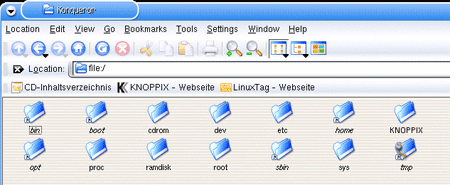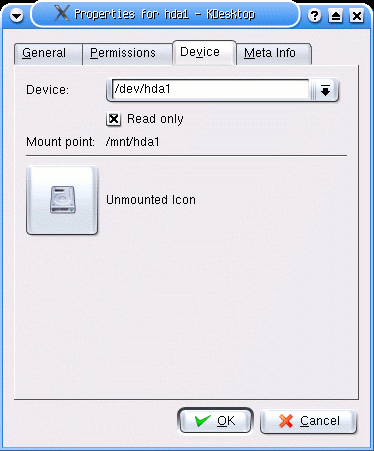
/: is the ROOT directory and the center of the Linux file
system. Unlike Windows, there is only one root directory, no matter how
many hard drives or storage devices you have. Every device is mounted
somewhere off the root directory.
/bin, /sbin: are directories which contain the various programs and
instructions that the operating system itself needs to function. Many of
the configuration programs present in the Knoppix graphical environment link
directly back to files in these directories.
/dev: contains various subdirectories that represent the hardware devices
attached to your system. '/dev/cdrom' is your optical drive, for
example. This is a good illustration of how everything, even hardware,
becomes a part of the overarching directory tree in Linux.
The /etc: directory and its subdirectories contain assorted text-based
configuration files which the operating system uses to govern its behaviour.
/home: generally contains personal directories for each user. In
the case of the Knoppix live CD we are using, a single user called 'Knoppix' is
created. You can think of the '/home/knoppix' directory as being your 'my
documents' folder for all intents and purposes.
/usr: contains various programs and routines that users can run on the
system, as well as help documents and even the source code for the Linux kernel
itself.

The /mnt: directory is a general repository for all data devices attached to
the system. hard drives and other storage devices are generally mounted in
subdirectories under /mnt. If you right click any of the hard drive
shortcuts on the desktop and select 'properties' then the 'device' tab, you will
see that the 'mount point' is listed as /mnt/(device name). This is the
directory that the shortcut links to in order to show your files. If you
went to the console (command prompt) and navigated to '/mnt/hda1' you would see
the contents of your Windows 'c:' drive.

